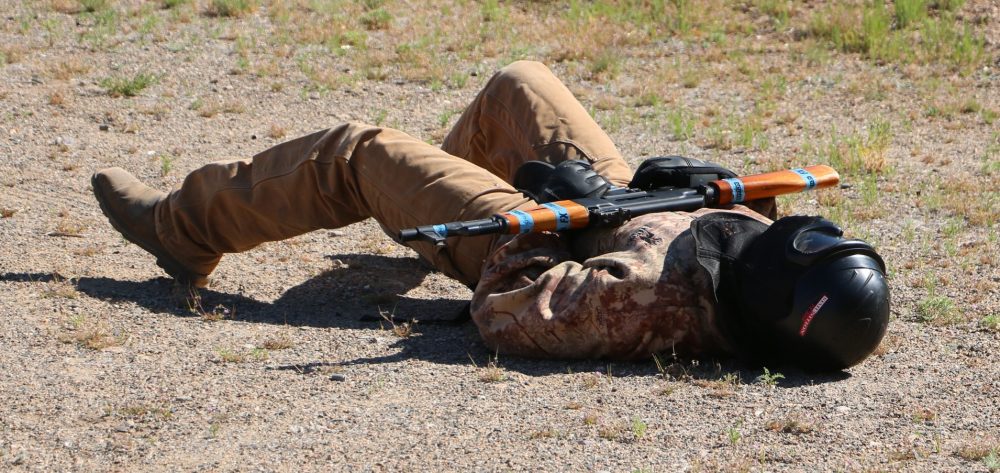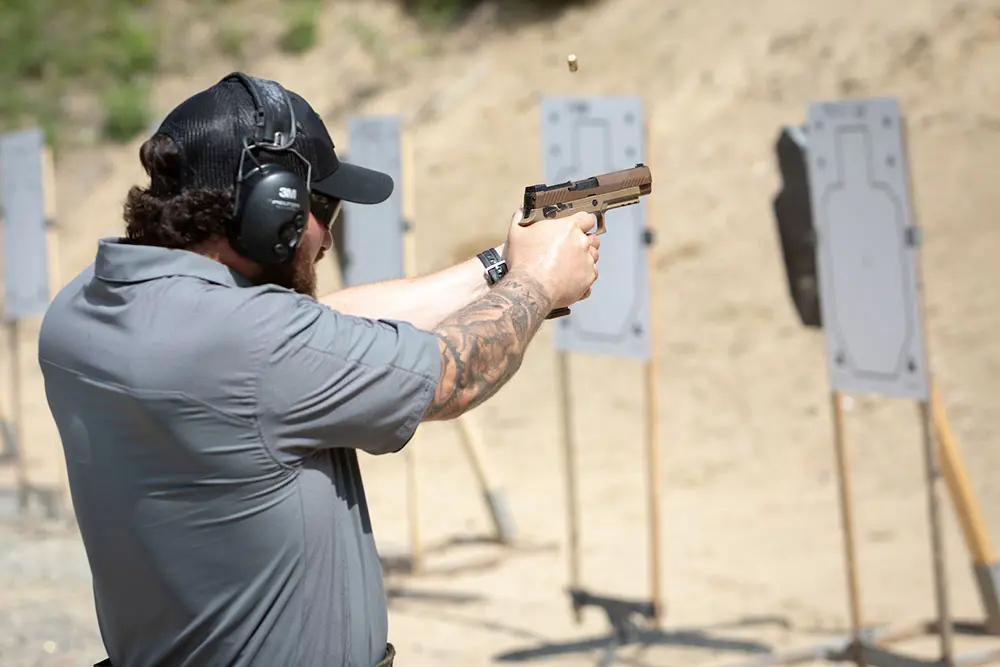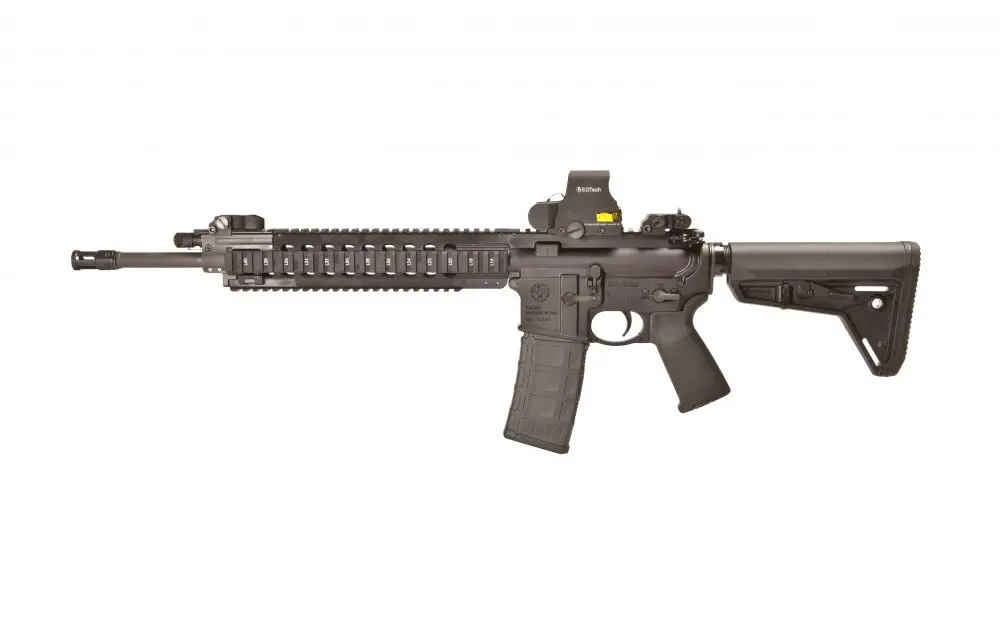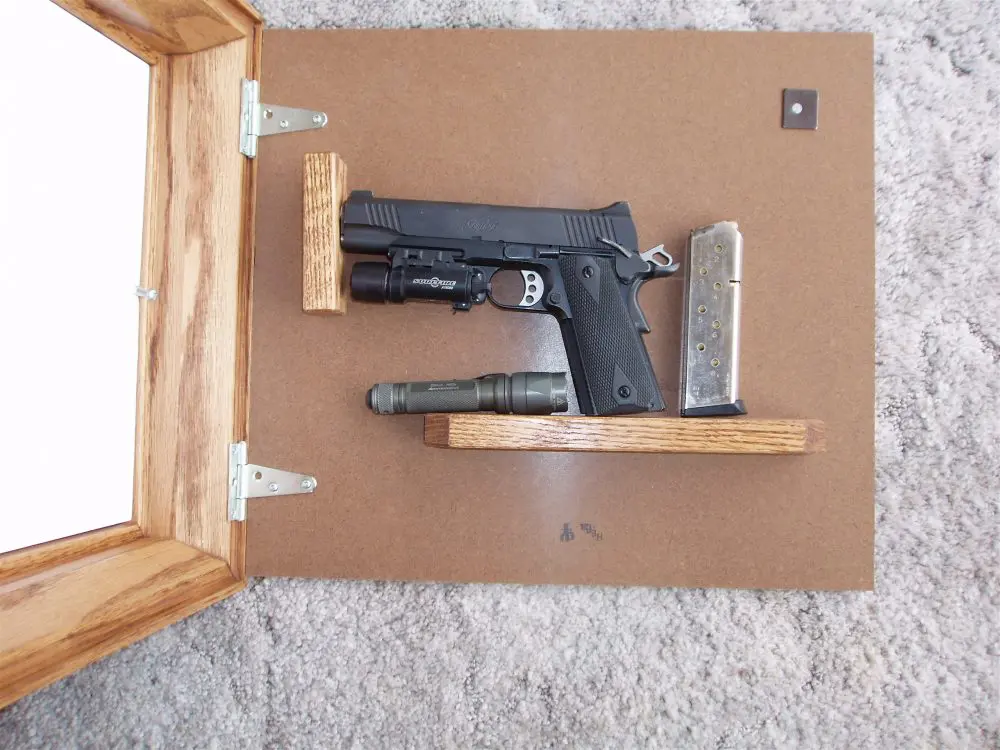A terrorist shooting may well involve his use of a rifle at other than ultra-close range. Can you handle that with your carry gun?
“We have to be successful every time. An active shooter or terrorist only has to succeed once.” This quote from Gunsite Academy’s Active Shooter/Terrorist Response for Civilians course hit home for me.
Of course, it’s unlikely I’ll ever find myself in an active shooter or terrorist attack, so “every time” means something different to me as a private citizen than it does to law enforcement.
To me it means daily vigilance in my situational awareness to avoid the more likely scenario of street crime and preparing myself with the information and skills I need: to be able to identify, detect, and respond in the event I am indeed caught in such an attack.
This is the stated purpose of this course, one of the newer offerings in Gunsite’s repertoire.
You’re probably familiar with the phrase “Run, Hide, Fight,” that’s promoted—in that order—as the correct response to an active shooter. While that might be good advice for some and can be learned by watching videos on YouTube, unfortunately the end result is often Run, Hide, Die. And it’s certainly not a Gunsite doctrine.
If I had to describe the Gunsite response to an active shooter in a three-word catchphrase, it might be “Push, Hold, Act.”
Complacency is dangerous. Just because it’s unlikely I’ll find myself in an attack like this doesn’t mean it won’t happen. Ask someone who’s been through one. You never think it will happen to you, and they’re happening with greater frequency, as we see in the news almost nightly.
Normally in street crime, you do not encounter a shooter with a rifle. Terrorists change all the rules.
But as the Gunsite instructors emphasized during the course, the media tends to hype the sensational stories rather than taking a hard look at the most likely attacks. Gathering intelligence through different sources was discussed in the classroom, including a list of recommended reading and looking to open-source intelligence organizations for information.
A realistic assessment of what the most likely threats actually are is an important starting point, and it’s up to you to be well informed.
While the government is responsible for detecting and preventing big-picture issues, we’re responsible for our own line-of-sight security. Just like defending your family in your own home, think about how long it could take for help to arrive no matter where an attack happens.
In a large-scale attack with multiple victims scattered around, it could take even longer for first responders to locate and reach everyone. Are you prepared to survive?
Table of Contents
PERSONAL PERSPECTIVE
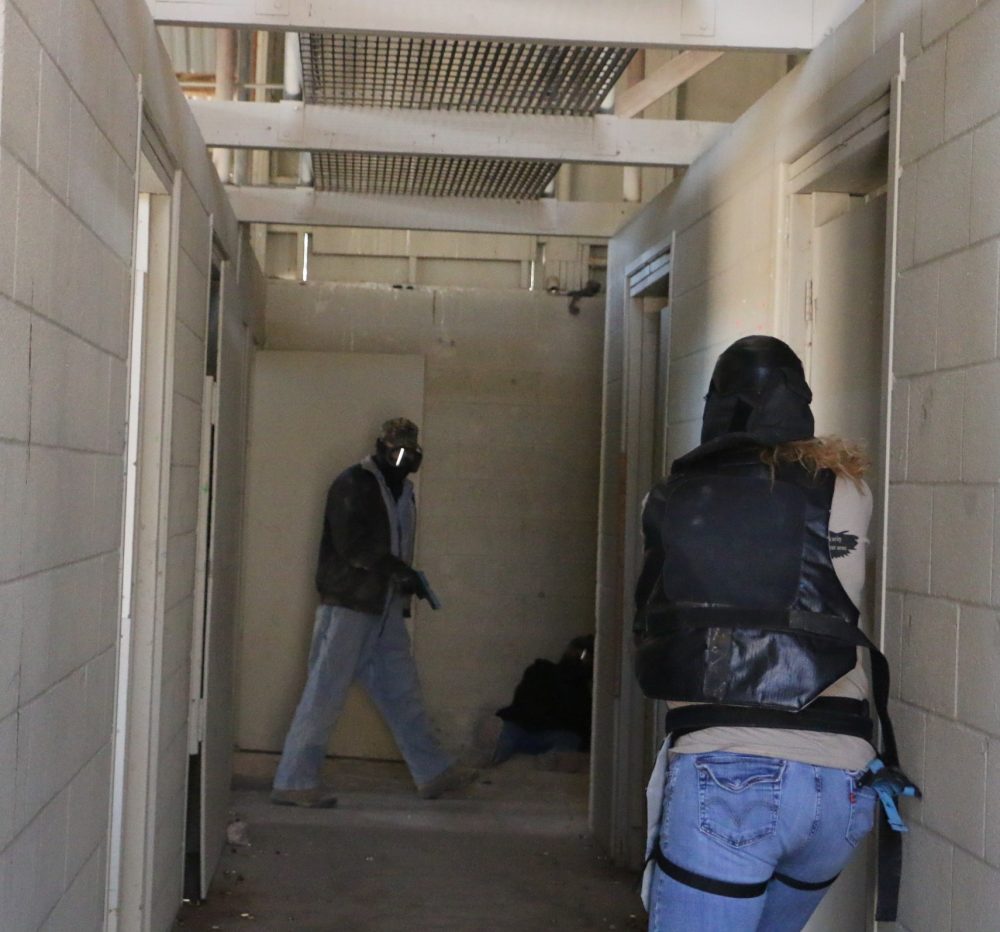
I have a huge amount of respect for law enforcement officers. They have chosen to swear an oath of honor and dutifully serve and protect their communities.
As private citizens, we have the freedom to choose the people we’re willing to take responsibility for in a defensive situation. Unlike “friends” on social media, our personal defense lists are usually quite a bit shorter, and change with decidedly less frequency.
But the list can also change for us depending on the situation with which we’re confronted. Life can also throw curve balls and make changes for us, as it did in my case.
Up until six months ago, my priorities and corresponding “what if” scenarios involved my fiancé. Then he passed away and it took a while for me to even comprehend considering a home-defense scenario, and when I did, I only wanted to defend my dog. If not for wanting to protect my sweet, loving Labrador, I wouldn’t have cared to even defend myself. That’s a pretty short list.
Once I could peer out from my grief bubble, the list opened up to family and close friends. My nearest family members live 400 miles away, and I can count on one hand the local people I care enough about to defend in a life-threatening situation. And while I’d fiercely protect my loved ones, I’m not even close to the hero type when it comes to strangers.
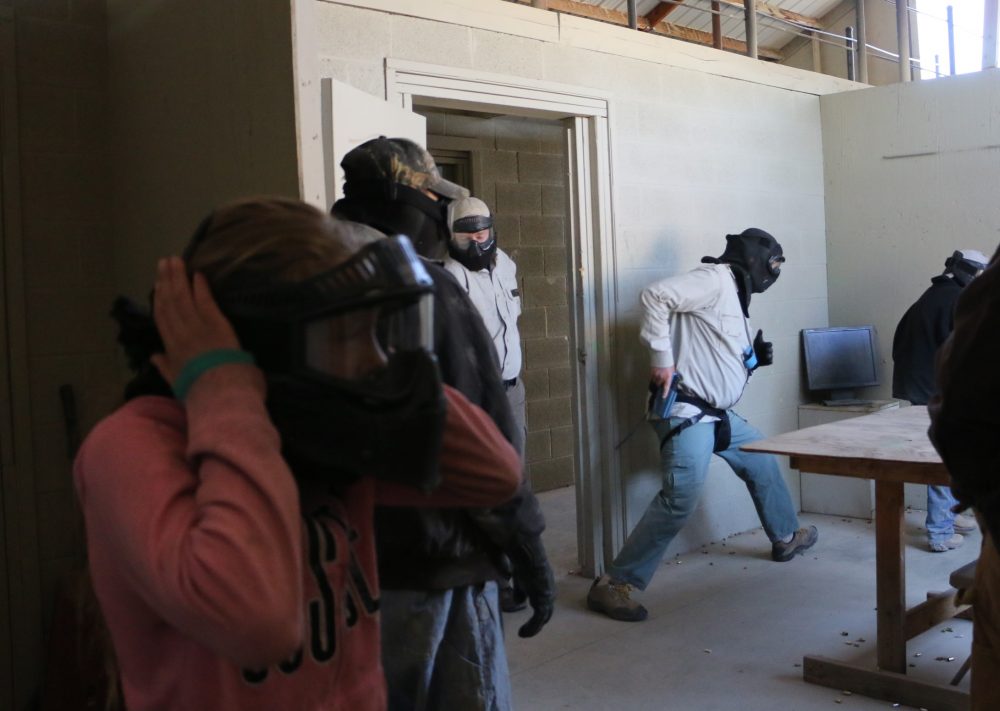
Until a few years ago, my “killer instinct” was reserved for defensive situations, to the point that I wouldn’t kill a bug, even if it meant I had to move them from indoors to out.
I guess life finally threw enough curve balls at me that I had to focus on what was truly important, and I lost patience with small stuff like those pesky bugs. I didn’t have the time or energy to not kill them.
After losing the most important life in my world, my instinct to preserve all innocent life returned. I give bugs their space when I encounter them outdoors. If they come inside, it depends on my convenience.
I imagine violent criminals have the same mentality—if it’s more expedient for them to kill a person than to avoid them, they’ll do it.
In all my training, my sole purpose has been for personal defense. Well, maybe not my sole purpose. I enjoy shooting, so training with firearms is fun for me, even though I take it seriously.
Some of my instructors may not believe that due to some unrestrained giggling on my part, but they should rest assured I can multitask seriousness and giggling. This class was my first trip back to Gunsite after the loss I am still suffering, and I was not laughing this time.
Don’t get me wrong, I still had fun in the process. Although I felt anxious about even attending in my state of mind, I got excited on Day One when I heard the types of activities we’d be doing in this course, and I snapped into training mode.
ACTIVE SHOOTER/TERRORIST RESPONSE
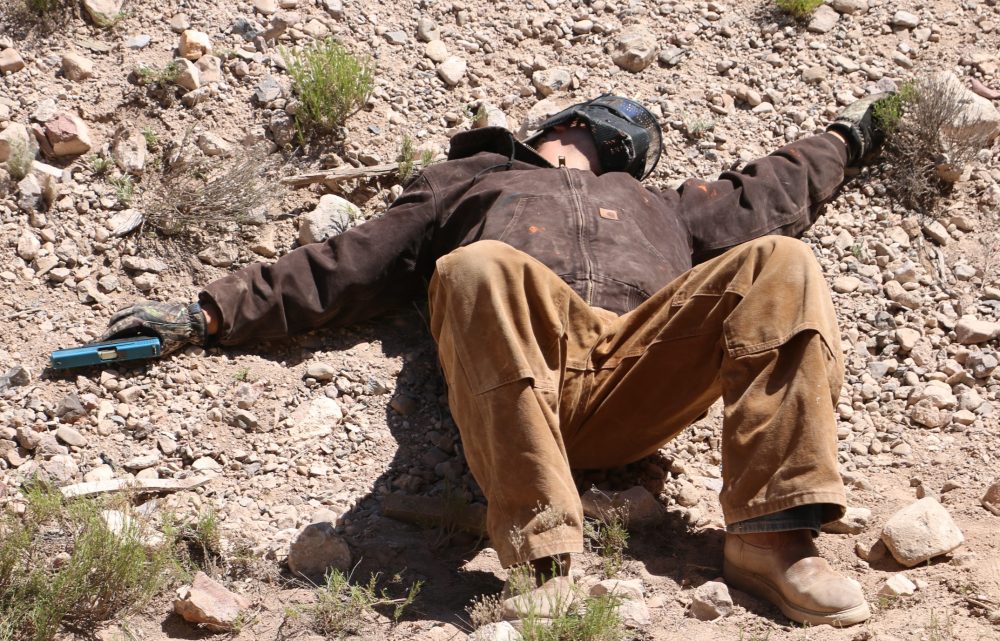
The class was instructed by Bob Whaley and Jay Tuttle, who were involved in the initial development of the curriculum and continue to tweak its constantly evolving material.
The course included classroom instruction, range work, and simulations, as you’d expect from any standard Gunsite class, but it’s what we did in those areas that sets this course apart.
In the classroom, we reviewed the different types of active shooters, including various terror groups and their goals.
Ultimately, the mission of an active shooter doesn’t matter if you’re in the middle of the shooting. Their tactics may not be great. They’re probably not expecting resistance. They may or may not intend to survive the incident. With our own preparation and knowledge, we may be making that decision for them if they put us or our families in life-threatening danger.
We watched videos about past terrorist attacks, including all of the above, and discussed lessons learned. We discussed identifying their methods in order to detect them, and some counter-surveillance ideas.
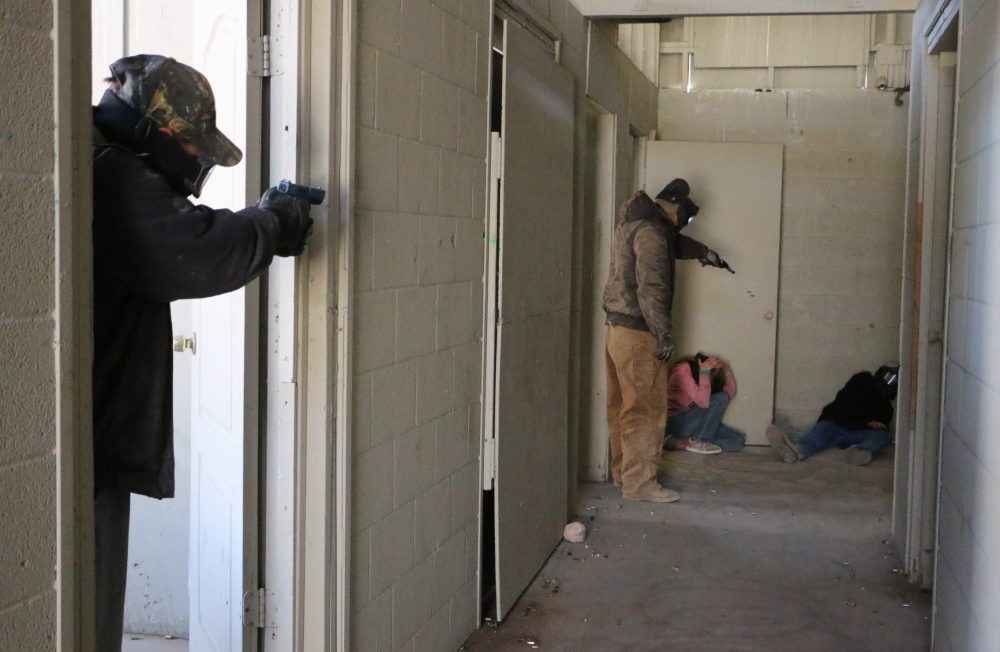
The mindset lecture also included slow-twitch and fast-twitch brain processing, and how, with proper training, your fast-twitch brain can learn options so the slow-twitch brain doesn’t interfere in a crisis. It’s about staying ahead of the curve.
We learned basic emergency first aid to provide lifesaving care to ourselves and our loved ones if necessary. We saw what happens when a victim just waits for the “omnipotent they” to come save the day—s/he bleeds out and dies.
Along with range time, much of this happened on Day One. This heavy content made for a restless first night for me, but on Day Two I was one step closer to getting back to a fierce mindset. I worked with a new weapon system for the duration of this class for another S.W.A.T. Magazine article, so I had that to focus on as well (see PREMIUM PRIMARY PISTOL: Wilson Combat EDC X9). My mind was definitely occupied with things other than grief, which was a welcome respite.
WHERE THE ACTION IS
If you’ve been to Gunsite, you know the usual components of a class: classroom instruction, a lot of trigger time on the ranges, one or more outdoor simulators in a wash, and some time in the shoot house(s). Depending on the course, you might also get some force-on-force situations, indoors or out.
The simulations are usually quite deliberate and safety-pace slow. This class was action packed at every turn. We did vehicle bailouts and a force-on-force scenario involving vehicles.
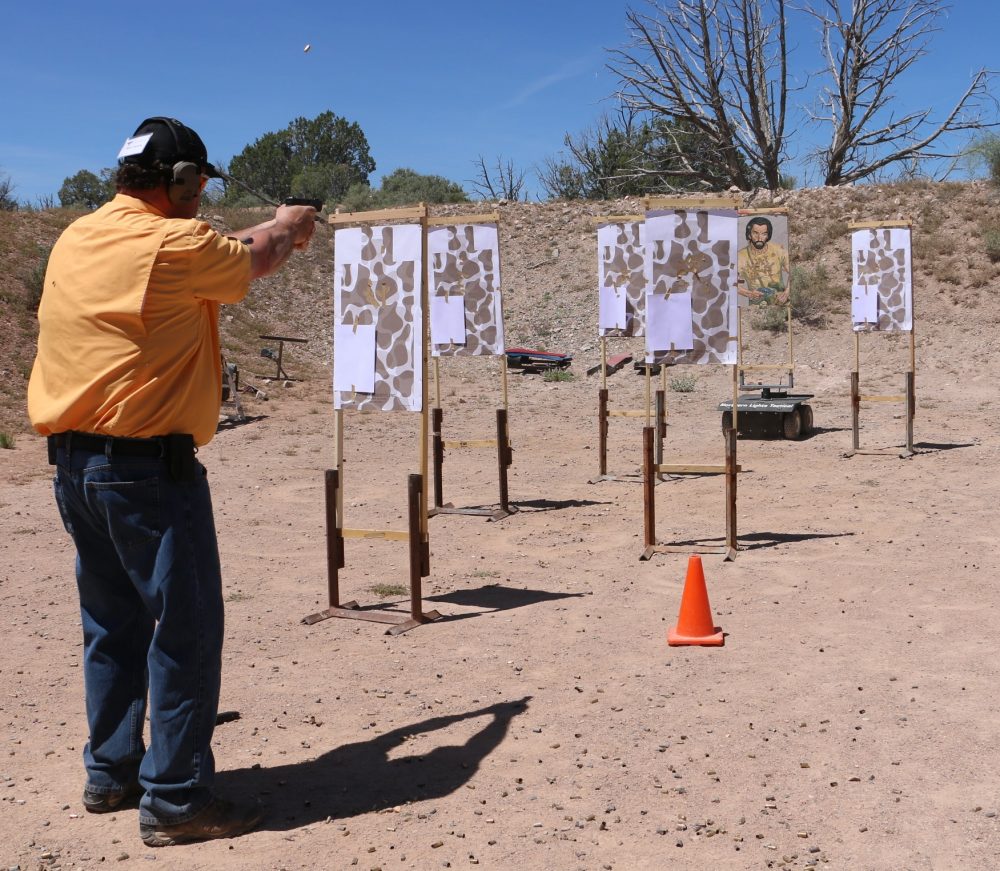
Even on the range, we moved quickly, sometimes with weapon drawn, through a sea of innocents with a single moving target (robot) darting in and out and behind the paper good guys. Every shot you took was at the risk of hitting an innocent. Angles mattered. Trajectory mattered. Cover and concealment mattered. This was no basic pistol class.
Down in the Donga (the simulator where we did one of the outdoor scenarios), an instructor followed behind, yelling in your ear about where the shots were coming from and how you had to move quickly to get to your loved one who is either in harm’s way or already shot and needs medical assistance.
You need to push, moving with an urgent briskness, but not faster than your brain can process the area. You still had to stay alert to your surroundings and the terrain, identify good and bad actors along the way, use cover and/or concealment, and handle the threat(s) without getting lost in your own gunfight.
Then you hold. Treat the wounded and call for help while still watching for more danger, because you might have to fight your way back out.
The same urgency applied in the shoot house, only it was force-on-force and there was no doubt about what the threat was. It was time to act.
In one scenario, a man was walking around in the “mall” shooting people. I knew “my nephew” was in there waiting for me, and when I entered, I heard him screaming. It was chaos, people all around were screaming, gunshots were echoing in the building, and I had to get to him quickly to administer first aid (in this case, a tourniquet) and call for help.
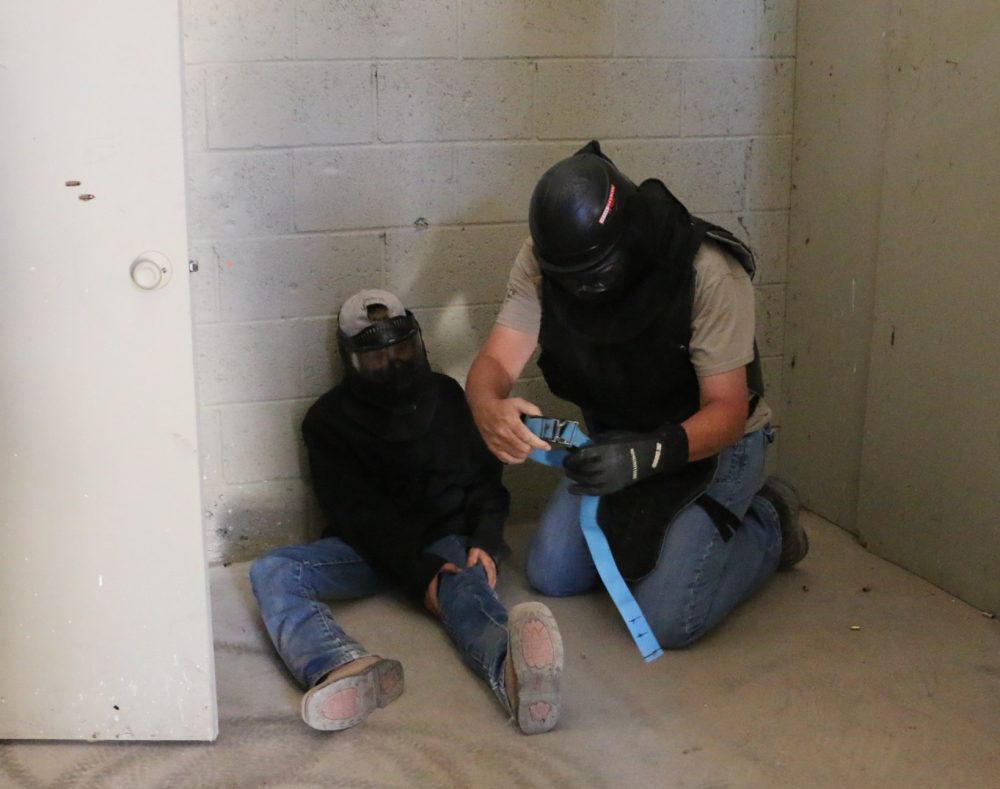
The threat was ongoing, so I had to eliminate that first, with no pieing of corners or clearing rooms along the way. Other bloody actors were screaming at me, but I had a single mission, and my fast-twitch brain barely processed them as I moved with urgency past the rooms they were in toward my goal.
Another scenario involved a shooter attacking in a restaurant at lunchtime while a group of us waited for a table. Gunsite role players have incredible screaming skills. It was an exciting class all around.
SUMMARY
With any luck, and I’m due for some, I’ll probably never experience an active shooter or terrorist attack. If I’m smart, alert, and stay vigilant, I may never experience street crime either. Or a home invasion.
I think of firearms and other self-defense training as insurance—the time I’m most going to need it is when I don’t have it, so I’m improving my odds by continuing to train.
As with every class I attend, I emerged from this one stronger than I went in. The timing in my life just made that difference more dramatic.
For me, this course met its objective because I feel better prepared to identify, detect, and respond to an active shooter situation no matter whom I choose to defend.
Whether or not you have a hero mentality, are you prepared to survive no matter where or how an attack happens?
Push or hold, but you must act.
Photos by Jane Anne Shimizu
SOURCE
GUNSITE
(928) 636-4565
www.gunsite.com


